Fortlandia is here for one more fortnight at the Wildflower Center
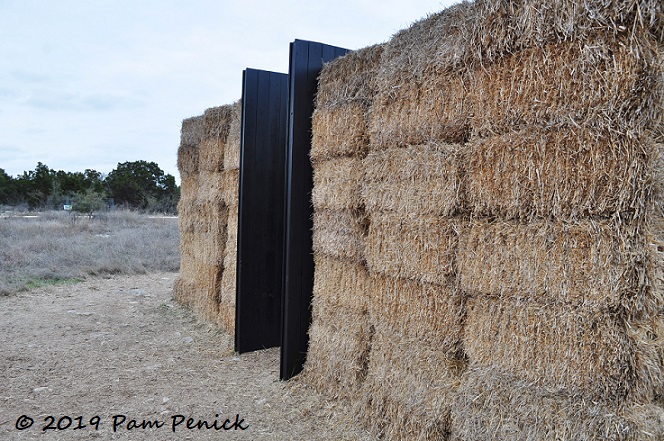
Thinking back on forts I made as a kid — from blanket forts to a climbable stack of firewood between two trees (aka the Batcave) to branch-outlined “houses” in the wooded lot next door — I find myself nostalgic for the pleasure of a hideaway. But we’re in luck, my fellow fort enthusiasts! Through January 26, Fortlandia at Austin’s Lady Bird Johnson Wildflower Center offers a chance to explore 10 creative custom forts built by local architects, designers, and artists.
Made out of hay bales, mirrored acrylic panels, sailcloth, rope, and even synthetic fur, Fortlandia’s forts beckon kids of all ages along the Arboretum trail. Majestic oaks shelter many of the constructions. Others stand boldly in clearings, offering a hidden spot to enjoy an expansive view.
SKYFORT
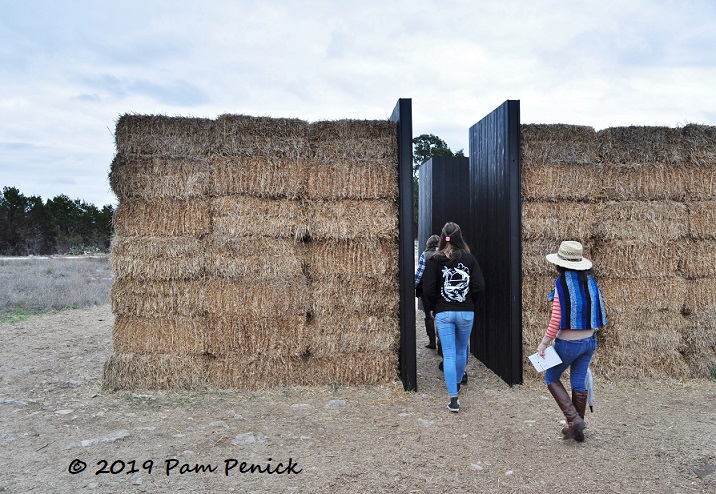
The minimalist SKYFORT, deceptively simple with its stacked bales of hay and intersecting straight paths, is an Instagrammer’s dream. The teen girls who came with me named it one of their favorites for its strong lines and black timber walls that frame horizontal and vertical (sky) views.
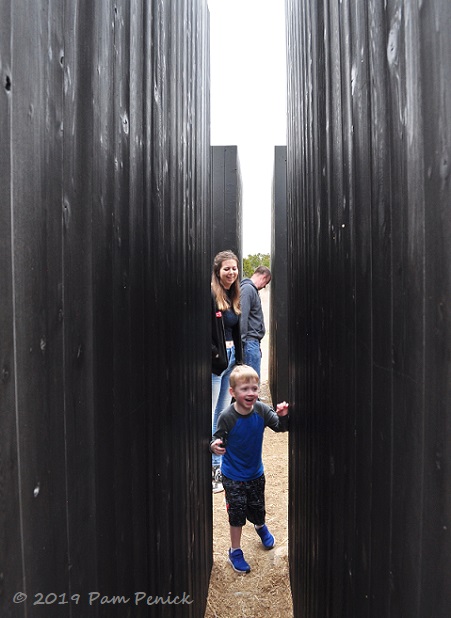
Here’s the official description:
SKYFORT by dwg: Straw bales and charred wood never looked so dreamy as they do in the surreal structure planted in the middle of our Hall of Texas Heroes historic oaks arena. The fort’s designers built it [to] celebrate “the intersection of sky and land through form, material and experience.” Created from local materials that represent the life cycle of a savanna ecosystem, this fort provides open-air corridors for gazing at the big Texas sky with various frames, angles, and perspectives.
Florapods
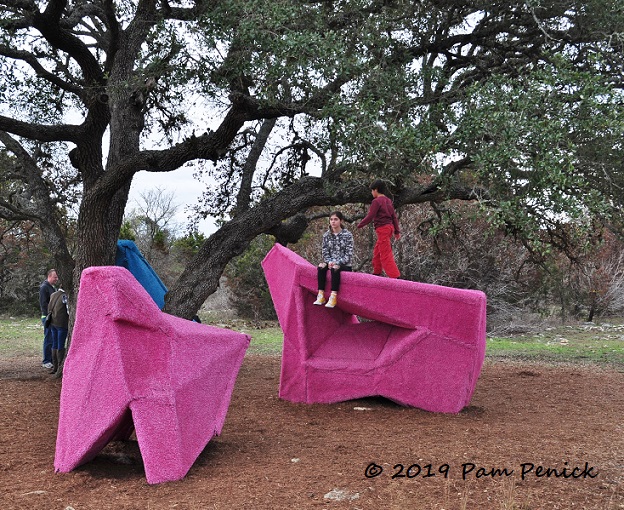
The ’70s vibe is strong with Florapods, an assemblage of squashed furniture-like constructions wrapped with raspberry- and sapphire-hued artificial turf. They beg to be climbed and lounged on. As described by the Wildflower Center:
Influenced by familiar animal forms, Florapods by The Beck Group recall our plush friends of yesteryear…Composed of sturdy plywood egg-crate structures layered with synthetic turf “fur,” they could be liberated, grown-up toys.
Color Keep
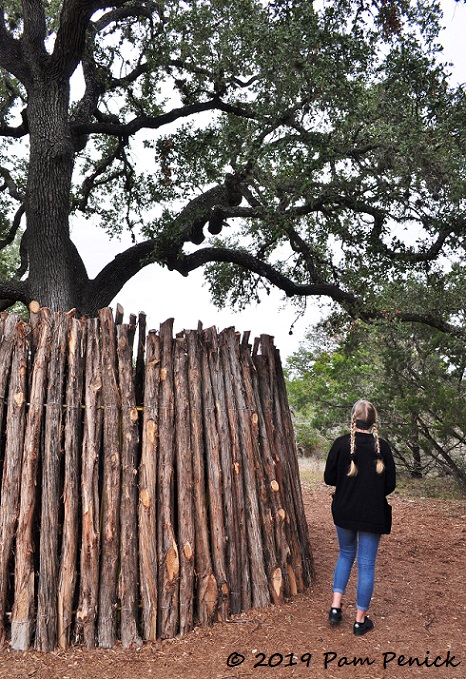
A forbidding enclosure of tall cedar posts around a live oak tree seems to say keep out as you approach Color Keep.
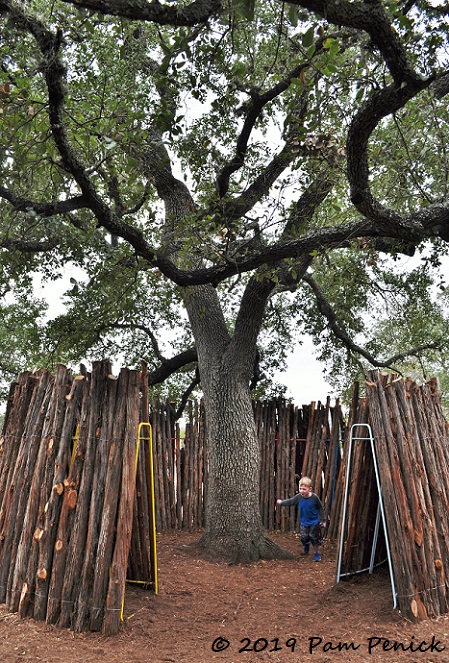
But then you discover the “moat” that allows access while neatly framing the tree. Colorful metal A-frames support the cedar posts and invite you to explore the inner wall.
Color Keep by TwoPlus Collaborative and Mud Lab Marfa and UTSOA students…is a round and round, catch-me-if-you-can, peekaboo kind of wonderland that smells like the Woodsy Good Place. The design brings attention to the sheltered, beautiful space created in the understory of a generous tree. A thick wall of cedar posts encircles an oak tree, giving the impression of an impenetrable “keep,” but explorers soon find the nooks and spaces for ducking inside to hide (and seek).
Hamaca de Flores
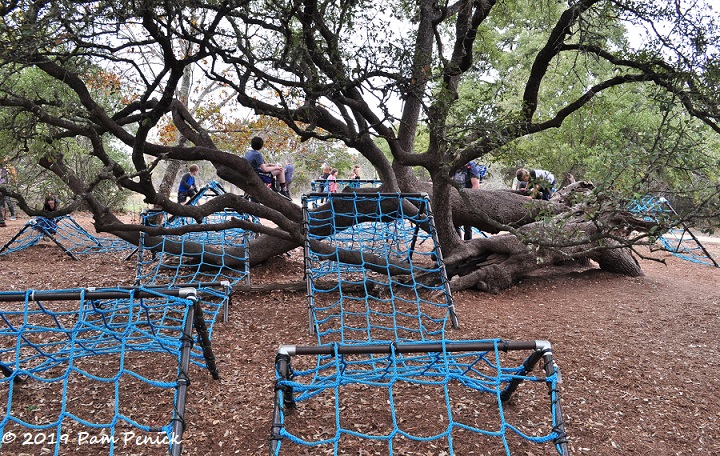
One of the most intriguing trees in the Arboretum is this horizontal live oak, which, a sign informs us, likely blew over in a tornado but kept on growing via anchored roots. Hamaca de Flores, an undulating series of blue rope catwalks (or obstacle courses?), surrounds the tree, inviting young explorers to climb into the branches and make the tree an integral part of the fort. According to the official description, the rolling “paths” evoke a springtime Hill Country landscape, when bluebonnets turn fields sky blue:
Hamaca de Flores by Austin Outdoor Design [draws] inspiration from rolling hills of springtime Texas wildflowers.
Color Trail Fort
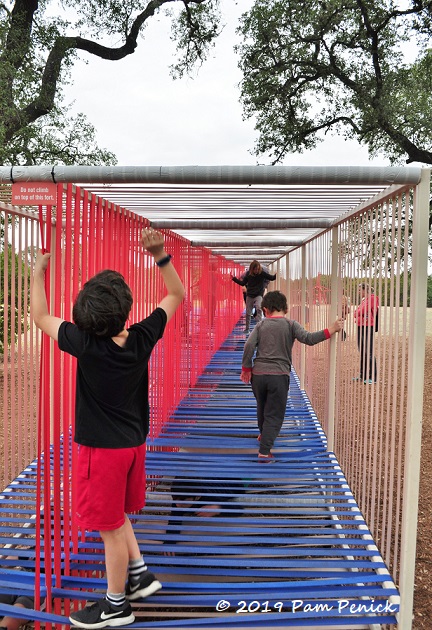
Texas wildflowers also influenced the design of Color Trail Fort. Elevated corridors of colorful webbing beckon you to walk through, as the perspective-shifting walls shrink or expand around you.
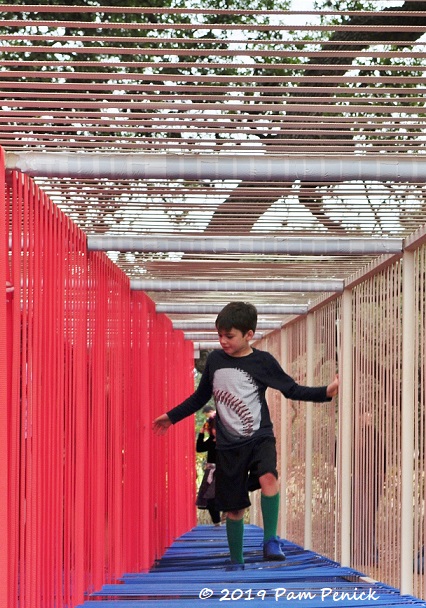
From the official description:
Color Trail Fort by Faye and Walker: Emulating patches of bluebonnets and Indian paintbrush across Hill Country fields, Color Trail evokes 3D vibes with red and blue while giving peeks of green trees and blue sky from almost any angle. Crawl or walk through, suspended on the bright fabric strips, or lay back and relax on a bed of webbing.
Fortmosa
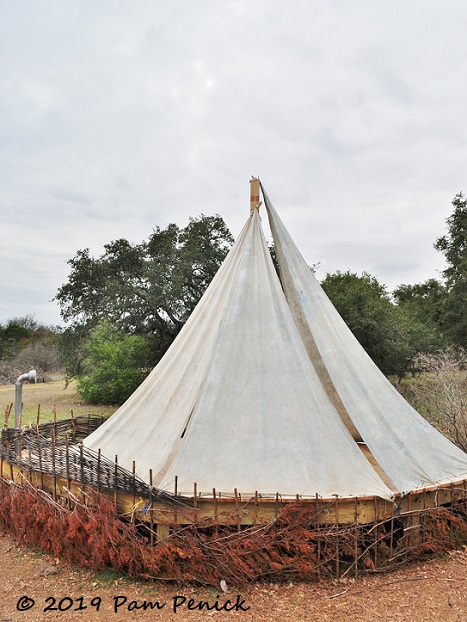
Like tepees or tented nests, Fortmosa consists of two elevated platforms wrapped with branches. From mast-like posts, white sailcloth billows like a ship’s sail. You can speak to playmates on the other “ship” via metal tubes that transmit sound.
Fortmosa by Blair Patterson: Two ships lost in the mysterious Formosa Triangle (the Bermuda Triangle of the Pacific) have reappeared in the Texas Arboretum. Set out on an adventure among the sails, travel between ships over a “sea” of waving native grasses, and communicate via fancy nautical “phones” nestled in the masts. Fort designer Blair Patterson’s intention is to “provide both shelter and adventure, groundedness and otherworldliness.”
Hidden in Plain Sight
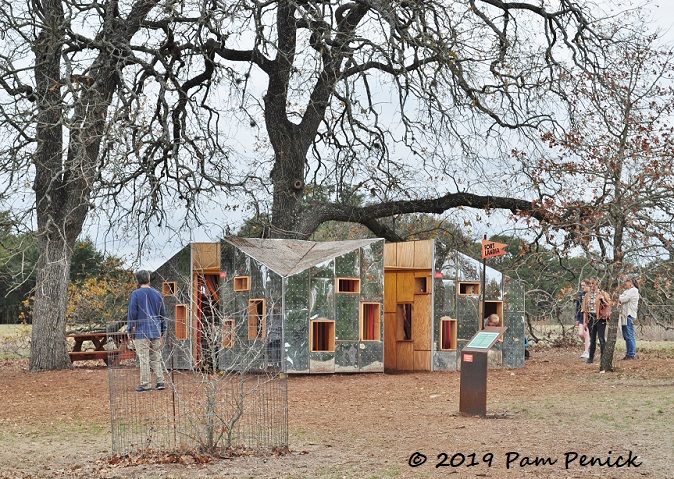
One of my favorite forts is the “invisible” Hidden in Plain Sight. Nearly adult-sized, it looks like a many-windowed house that’s been pulled apart, revealing a plywood interior of hallways and secret rooms.
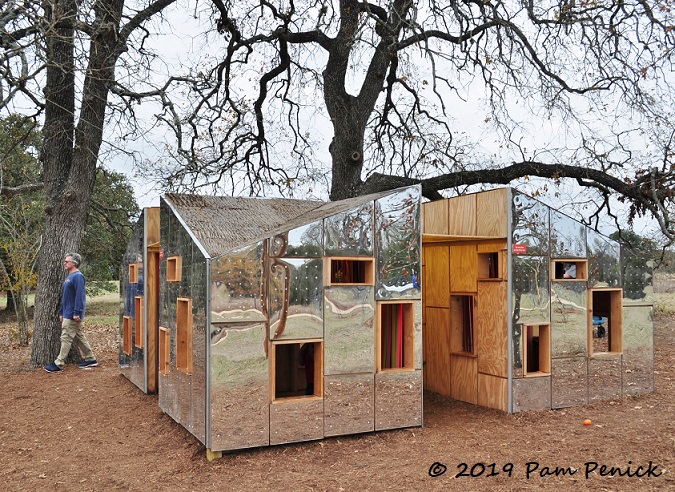
As the Wildflower Center describes it:
A clever take on camouflage, Hidden in Plain Sight by Nelsen Partners recalls the excitement and wonder of hide-and-seek whether among the trees or in a colorful cozy room. The fort is clad in mirrored acrylic panels to reflect trees and sky so visitors can peek through windows and see without being seen.
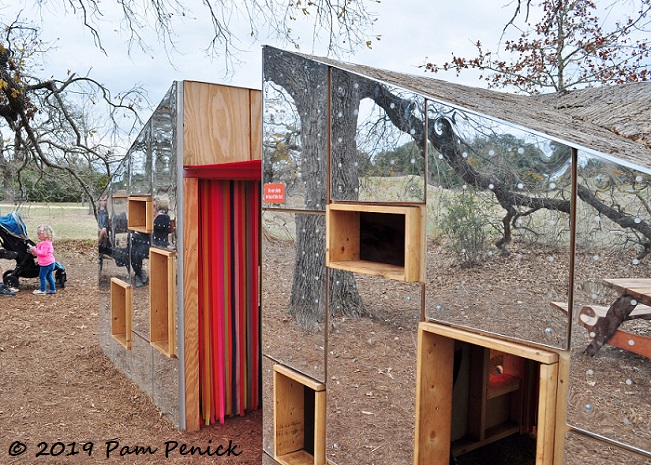
From any angle you enjoy reflected views of trees, other people, or yourself in the fort’s mirrored siding.
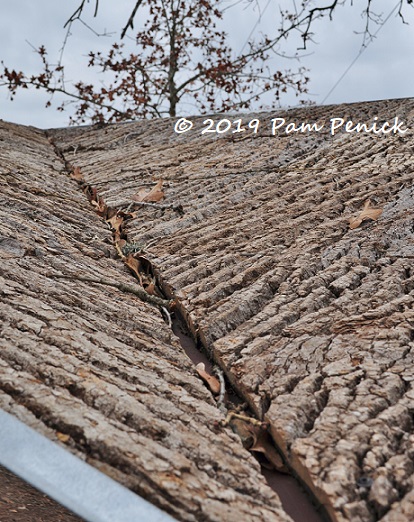
Slabs of corky bark make natural shingles on the roof.
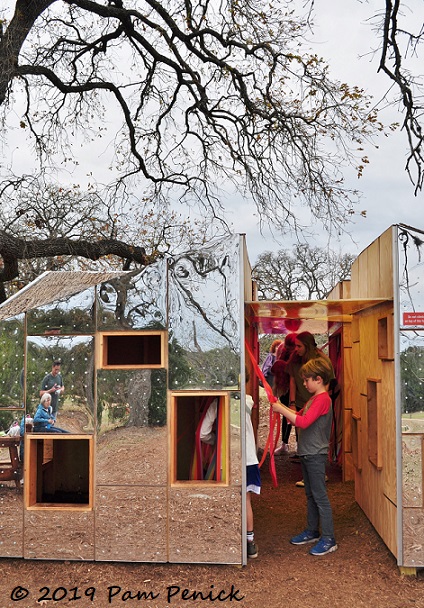
It’s the ultimate peek-a-boo fort.
Flitch Fort
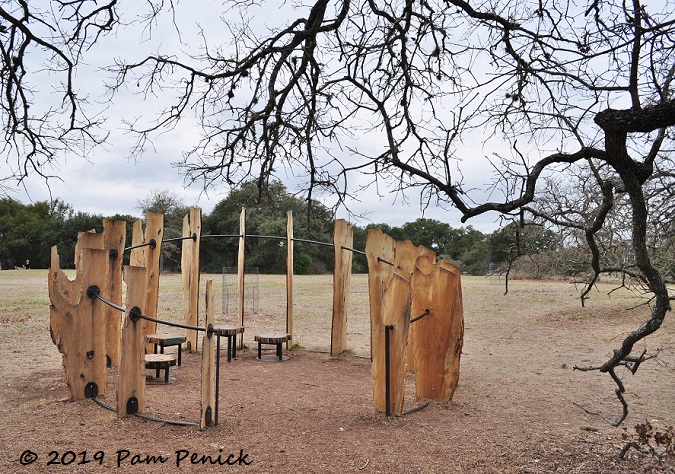
The open and airy Flitch Fort is another of my favorites. A tilted steel ring pierces vertical slabs of post oak, known as flitches, seemingly breaking apart the tree’s interior and stringing it back together again. The encircling design beckons you inside, where four stair-stepping stools invite you to climb up for a new perspective, or sit and contemplate being “inside” a tree.
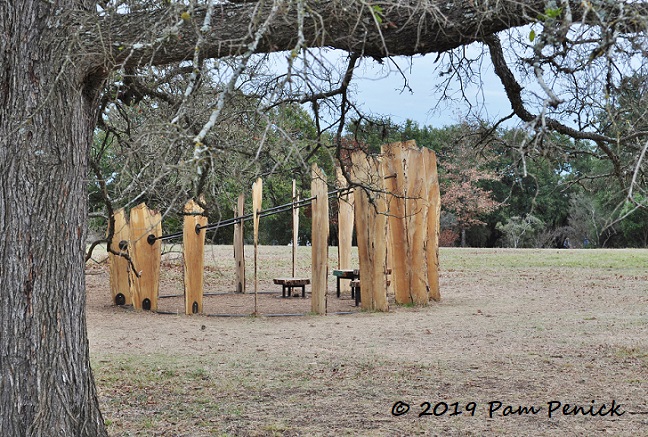
From the official description:
Flitch Fort by Hatch Workshop [is] made from a single post oak…Each Flitch off the sawmill is placed in order along a steel ring.
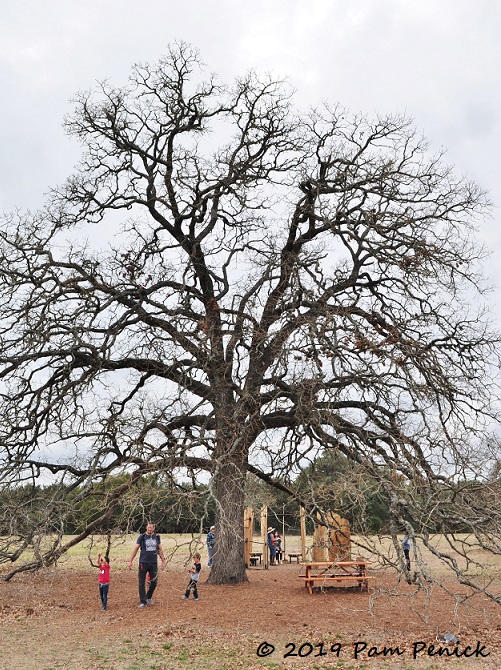
I particularly like the juxtaposition of Flitch Fort with the bare-limbed oak that frames it.
Fairy Pavilion
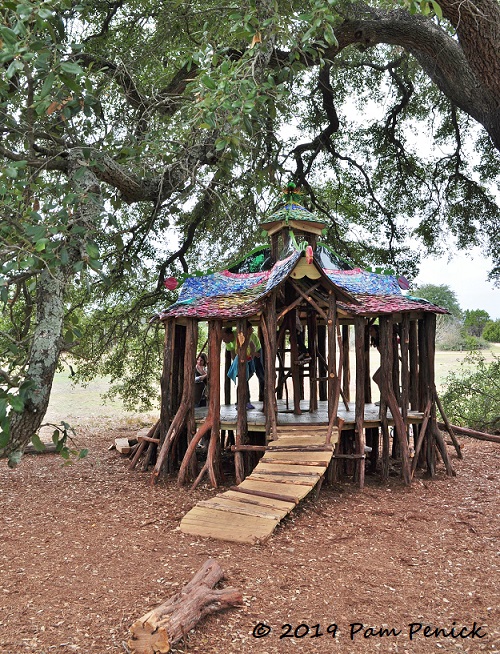
Fairy Pavilion, designed by James Talbot of Casa Neverlandia, which I toured last fall, is a woodland construction of cedar posts and a hammered-soda-can roof. Looking as if it could be the home of elves, it appears in a clearing among sheltering trees.
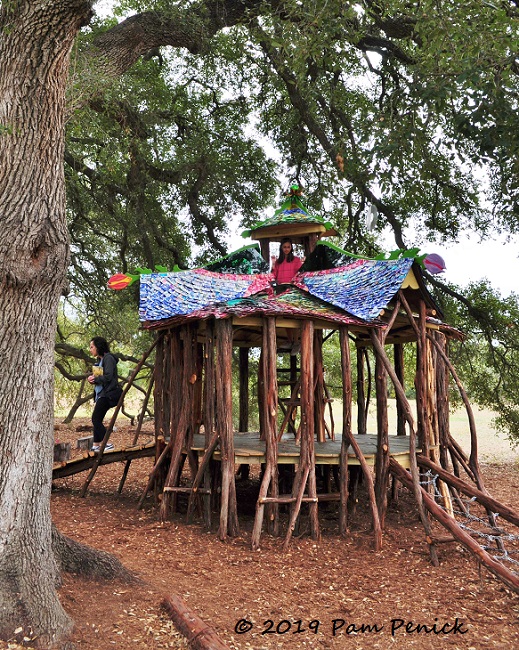
A crow’s nest ladder offers kids a view from the roof. Access into the fort includes a rope net strung between cedar branches, a ramp, and wooden stairs.
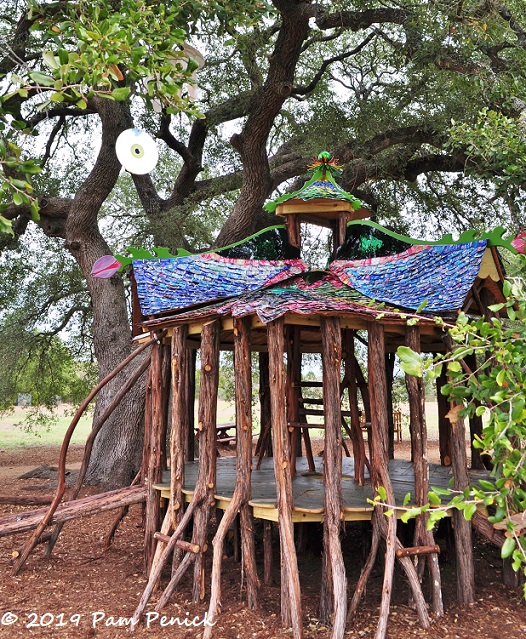
From the official description:
Fairy Pavilion by James Edward Talbot is a magical fort made from practical materials. The rainbow shingles, for example, are actually 3,000 aluminum cans collected from the streets of ATX and hammered flat. Other features of this fort are made from repurposed lumber, Ashe juniper, an antique iron wagon wheel & other recycled materials.
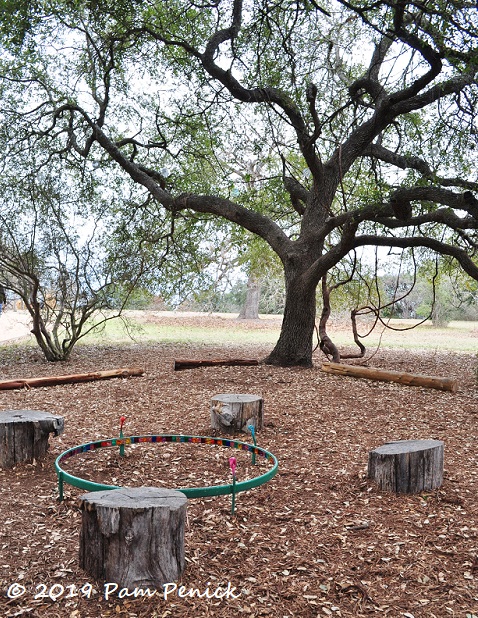
Off to the side, in a large clearing outlined with tree trunks and living trees, a fairy circle — a painted steel ring — invites you to sit on stump stools or, if you dare, step into the magical circle itself.
B-A-B
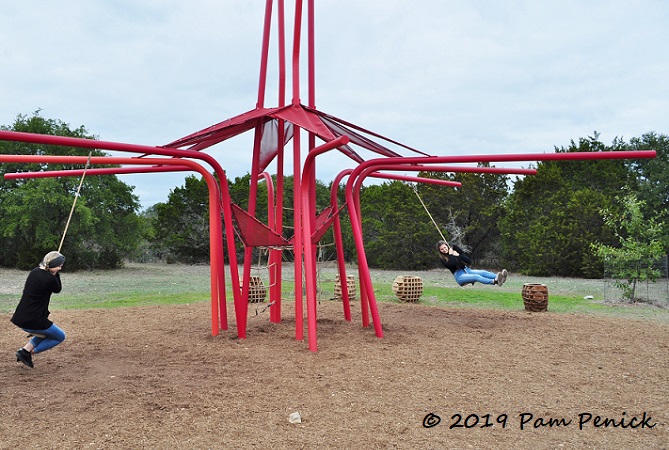
B-A-B (get it?) reminds me of a 1950s playground structure. Rope swings offer a bee-like “flight” around the red steel “hive,” or you can climb into the center of the structure. Honeycomb-shaped stools around the perimeter provide another place to climb or rest. From the official description:
The towering, climbable B-A-B celebrates pollination and the work of bees and other insects. The flowerlike structure is formed from cantilevered and tension brazed 4″ bent steel pipes. The seeds or pollen are represented by freestanding CNCed wood pods. The fort invites visitors to “buzz” about, moving “pollen” from giant anther to stigma and ovule. Designers: Minguell-McQuary Architecture+Design and Leap!Structures
Build your own fort
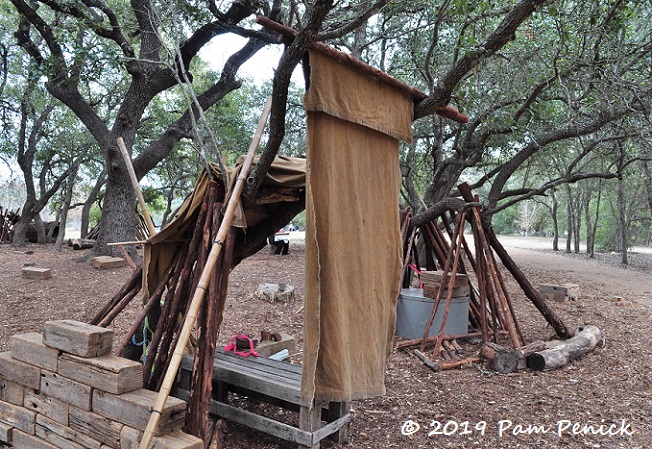
Along the trail, those who fancy building their own forts can do so in a clearing stocked with materials like logs, branches, blocks of wood, fabric, steel drums, and more.
Arboretum tree swings
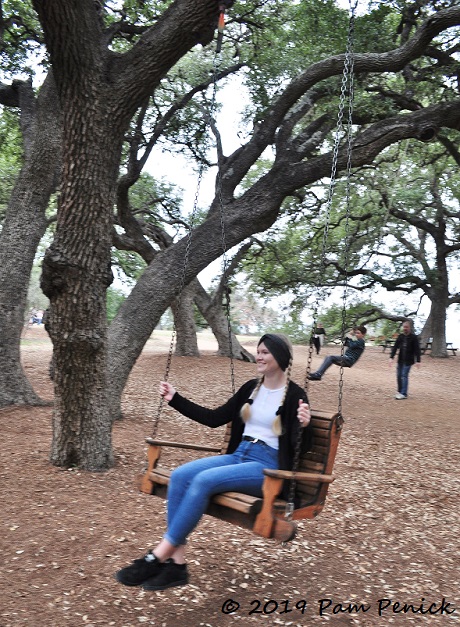
And no visit to the Arboretum would be complete without swinging under the trees on the many hanging benches and rope swings that are a permanent part of the gardens. I love that the Wildflower Center installed these swings so that you can enjoy the trees in an interactive way.
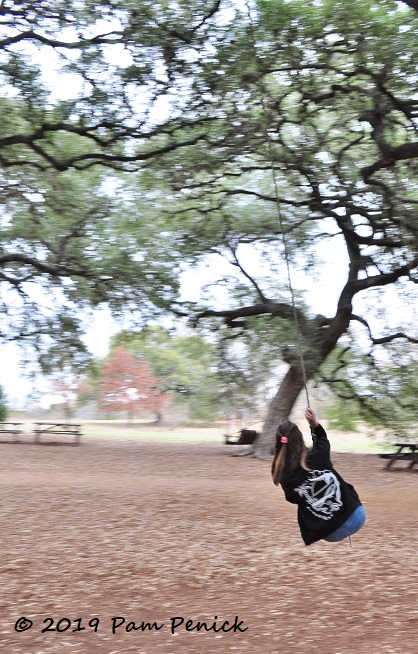
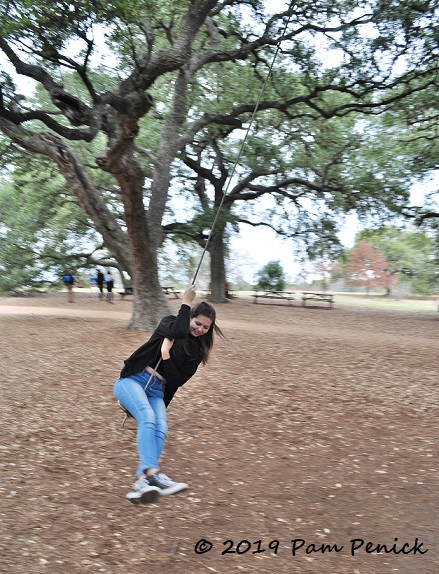
Winter gardens
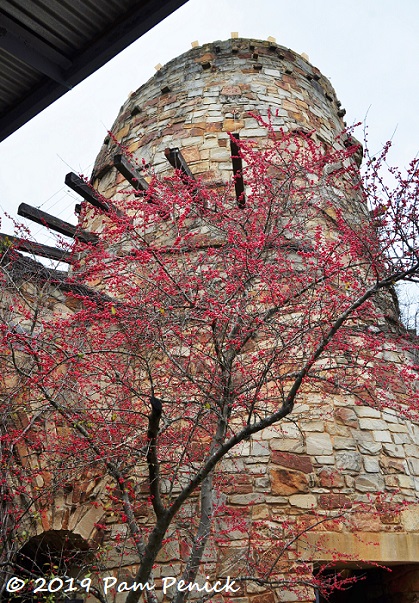
While wildflowers are scarce at this time of year, the gardens still have plenty of interest. Red possumhaw berries are blazing, attracting hungry mockingbirds and cedar waxwings.
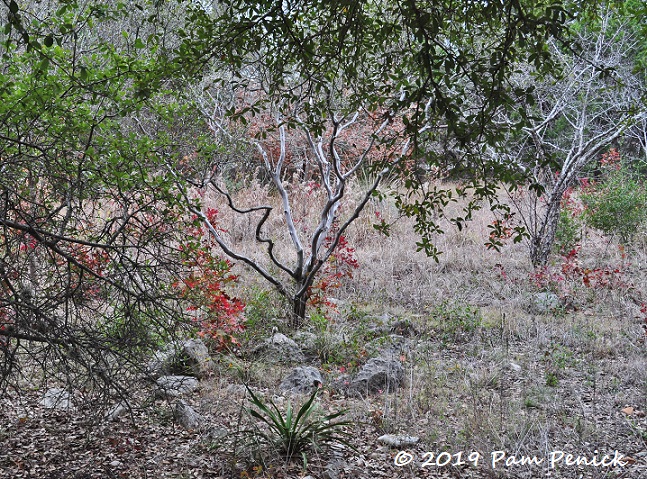
And tawny grasses and evergreen yuccas sprouting among the rocks frame sinuous white-trunked Texas persimmon.
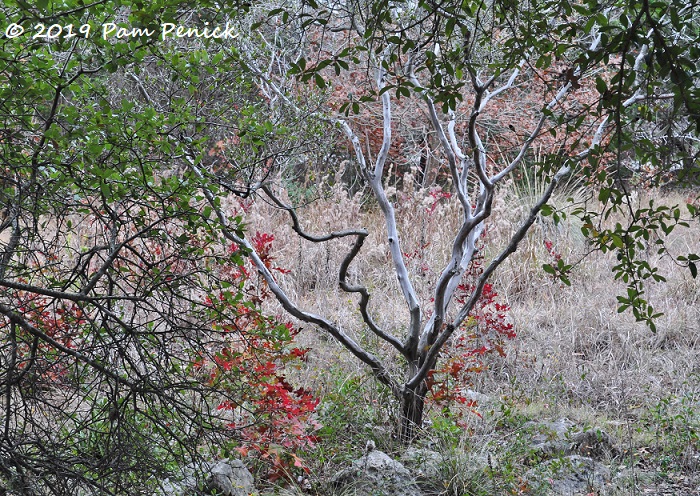
Fortlandia opened in October and ends its run on January 26, so go soon if you want to explore it for yourself. And to see more fort inspiration, check out my post from last year’s Fortlandia 2018-19.
__________________________
Digging Deeper
Come learn about gardening and design at Garden Spark! I organize in-person talks by inspiring designers, landscape architects, authors, and gardeners a few times a year in Austin. These are limited-attendance events that sell out quickly, so join the Garden Spark email list to be notified in advance; simply click this link and ask to be added. Season 8 kicks off in fall 2024. Stay tuned for more info!
All material © 2025 by Pam Penick for Digging. Unauthorized reproduction prohibited.


Wonderful! I love Hidden in Plain Sight and the Color Trail Fort. I wish my local botanic garden would introduce something similar.
It’s a great way to get kids and families into a botanic garden, although I imagine there is a fair amount of wear and tear that occurs. Luckily the Wildflower Center’s Arboretum is a perfect place for it, with its open fields and mulched areas under the trees.
While they are all interesting I love the Flitch Fort. I want one. If only I had an area large enough.
The Flitch Fort is unique and beautiful. And I am sure you have room for a fort, Lisa. After all, they can be tucked around trees and as small as you like.